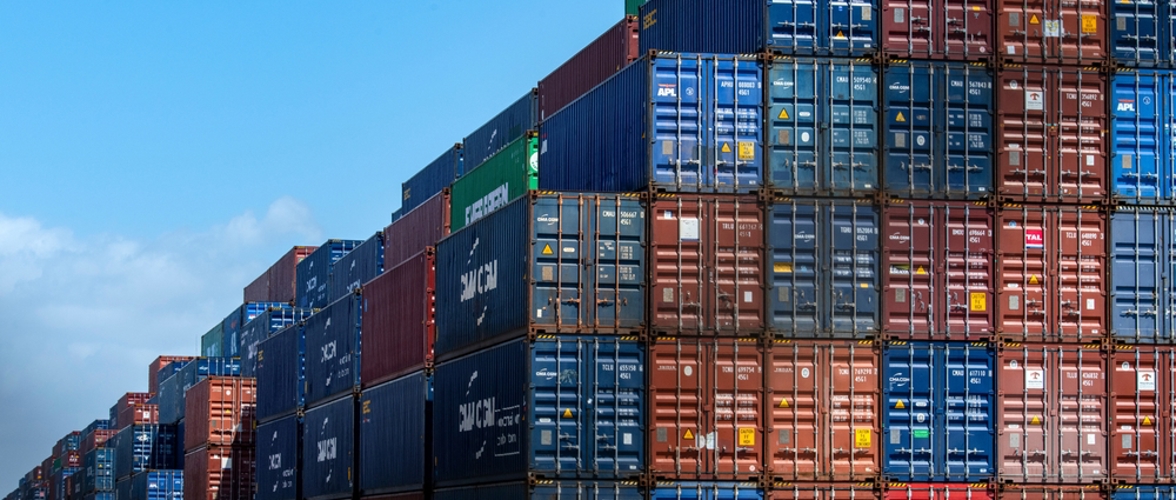Key Takeaways
- Key drivers of reshoring include rising offshore labor costs, supply chain disruptions, automation and demand for ethical, sustainable practices.
- Reshoring cuts shipping costs, shortens lead times, strengthens supply chains, lowers risks, boosts sustainability and supports local economies.
- Businesses can seize reshoring opportunities by assessing demand, leveraging automation, using incentives and optimizing supply chains.
Is your supply chain working for you—or against you?
Offshoring isn’t what it used to be. What was once the go-to strategy for cutting costs now comes with mounting risks—fragile supply chains, geopolitical tensions, rising labor expenses, and growing consumer demand for sustainability. The smartest manufacturers aren’t just reacting to these challenges; they’re proactively reshaping their operations through reshoring—bringing production back home—or regionalization, strategically distributing manufacturing across key markets.
These aren’t just defensive moves. They offer greater supply chain control, cost stability, and the ability to meet shifting regulatory and consumer expectations head-on. As the global manufacturing landscape transforms, businesses that embrace these strategies will gain a competitive edge—while those that hesitate risk falling behind.
Global manufacturing is undergoing a major shift. Companies are moving production closer to home or key markets, driven by geopolitical instability, supply chain disruptions, and the push for sustainability. Reshoring brings manufacturing back to a company’s home country, while regionalization distributes operations across strategic hubs to serve local markets. These approaches aren’t just trends—they’re strategic moves to enhance supply chain control, reduce risk, and meet growing consumer demand for ethical, sustainable practices. As the global manufacturing sector evolves, reshoring and regionalization are set to reshape the future of manufacturing.

Reshoring, nearshoring and friendshoring – what are they?
Reshoring is the process of returning manufacturing operations from an overseas location back to a company’s home country. It is the reverse of offshoring, where manufacturing moves abroad to reduce costs. Offshoring often involves companies in Western nations shifting production to countries like India, China, or Vietnam.
Similar concepts to reshoring include nearshoring and friendshoring. Nearshoring relocates manufacturing to a nearby country rather than bringing it all the way back home, balancing cost savings with supply chain efficiency. Friendshoring moves production to politically aligned nations to minimize geopolitical risks.
What is regionalization and how is it different?
While reshoring, nearshoring, and friendshoring focus on relocating production, regionalization takes a different approach. Instead of relying on a single global supply chain, companies distribute operations across multiple regional hubs, tailoring production to local economies and consumer demands.
By manufacturing closer to key markets, businesses can shorten supply chains, reduce logistical risks, and improve responsiveness. This approach is gaining traction as companies move away from long, complex global networks in favor of localized, efficient, and adaptable production models.
Why are companies moving toward reshoring and regionalization?
The move toward domestic production is driven by several key factors, including economic shifts, supply chain vulnerabilities, technological advancements, and changing consumer and regulatory expectations.
1. Rising labour costs in offshoring hubs
Offshoring to China and other Asian countries surged in popularity during the 1990s, aligning with China's rapid industrialization. A key driving force behind this trend was China's significantly lower labour costs compared to regions like Australia, North America and Europe. This shift propelled China’s economy faster than Western counterparts, evidenced by China’s GDP climbing from 6.1% of the United States' GDP in 1990 to 65.0% in 2023.
As China’s economy grew rapidly, so did its wages. In 2000, just one year before China joined the World Trade Organization, its average yearly wages were around $1,127 US dollars. This was dwarfed by Western countries, representing around 4% of the United States average wage of $30,846 at that time.
Fast forward to 2023, China's average annual wage had risen substantially to around $17,091 USD. While wages in the United States also increased, reaching $66,622, the gap narrowed as Chinese wages grew to approximately 25.7% of U.S. wages. The rise in Chinese wages indicates that the country's strongest competitive advantage, low labour costs, is diminishing, encouraging companies in Western countries to consider reshoring their manufacturing operations.
Additionally, increases in transportation costs have further reduced the cost advantages of offshoring, enhancing the economic viability of this trend.

2. Supply chain disruptions and risk management
In recent years, companies have become acutely aware of the risks associated with offshoring and an overreliance on global supply chain resilience. It has become evident that supply chain disruptions pose significant risks to businesses.
In late 2023, following conflict in the Red Sea, many large freight companies were forced to alter routes, which added weeks to delivery times. The COVID-19 pandemic also substantially impacted global supply chains, as staff shortages, factory closures and travel restrictions caused significant disruptions.
As companies recognise the fragility of global supply chains, the benefits of shifting to domestic production, which reduces supply chain complexity and enhance control, become increasingly apparent.
3. Advancements in automation and digital manufacturing
Technological advancements in automation and digital manufacturing are crucial drivers behind these trends. As automation becomes increasingly sophisticated and affordable, it is more feasible for manufacturing companies to implement. Automation reduces the need for manual labour, which diminishes offshoring’s appeal since low labour costs are its traditional advantage.
By minimising labour costs, automation and robotics make production within the home country more economically viable, allowing companies to manufacture products closer to their consumer bases without incurring the high expenses previously associated with local labour. This factor contributes less to driving reshoring and regionalization in Australia, as the country is considered to be falling behind in advancing and implementing automation technologies.
4. Changing consumer expectations
As consumers increasingly expect companies to act ethically, environmentally and socially responsibly, businesses are encouraged to consider the reputational benefits of manufacturing in their home country. Offshoring has often been criticised for exploiting countries with weak labour laws and lax environmental regulations. By reshoring, companies can enhance their reputation and differentiate themselves in the market, potentially boosting sales and performance.

With the growth of e-commerce’s popularity, competition has intensified and product waiting times have become a crucial differentiator between manufacturing companies. Consumers are increasingly expecting faster delivery of their purchases. Offshoring requires lengthy transportation, making it more challenging for companies to deliver products quickly. By manufacturing products in the countries where they conduct business, companies can significantly reduce delivery times, encouraging them to reshore their operations.
5. Government policies and incentives
Governments worldwide are introducing policies to encourage domestic manufacturing. President Donald Trump has promised to impose substantial tariffs on products imported into the United States, attempting to discourage U.S. companies from offshoring by making imported goods more expensive, and thereby encouraging them to reshore manufacturing operations back to the country.
Similarly, President Biden introduced measures to incentivise companies to manufacture products domestically. The CHIPS and Science Act was enacted in 2022, dedicating around $280 billion in funding to encourage semiconductor manufacturing in the United States. This funding includes subsidies, tax credits, investments in research and workforce training and support for broader science and technology research. These initiatives aim to strengthen domestic manufacturing capabilities and reduce reliance on overseas production.
6. Regional differences in reshoring trends
While these shifts are influenced by common factors like economic shifts, technological advancements and geopolitical considerations, different regions have unique drivers propelling these changes. Australia is focused on using its abundance of natural resources to process and manufacture domestically rather than simply exporting raw materials, a strategy outlined in the Critical Minerals Strategy 2023–2030.
In North America, particularly the United States, trade policies and economic nationalism are key motivators. The implementation of tariffs on imported goods, especially from China, has made offshoring less attractive, while movements like "Made in America" encourage companies to bring manufacturing back to support local economies.
In Europe, stringent sustainability and environmental regulations are major drivers. Europe's aggressive climate goals promote local manufacturing to reduce carbon emissions associated with transportation, encouraging companies to produce goods closer to their target markets.
What are the benefits of reshoring and regionalization?
Shifting to localized production isn’t just a risk mitigation tactic—it’s a strategic move that enhances supply chain control, reduces costs, and improves market responsiveness. As global uncertainties grow, companies that localize production gain a competitive edge. Here’s why:
Stronger supply chains
Manufacturing closer to key markets reduces shipping costs, shortens lead times, and improves supply chain visibility. Companies can respond faster to demand fluctuations and avoid major disruptions.
Reduced risk and geopolitical exposure
Relying on overseas production comes with uncertainties—tariffs, trade restrictions, and global conflicts. Reshoring minimizes exposure to these risks and builds resilience against market volatility.

Sustainability and reputation boost
Local production lowers carbon emissions, meets stricter environmental regulations, and strengthens a company’s brand. Consumers increasingly favor ethical, sustainable businesses, making reshoring a smart long-term investment.
Innovation and economic growth
Bringing manufacturing home fosters innovation and technological advancements while creating local jobs. Companies that invest in cutting-edge production techniques can gain a competitive edge in their markets.
How to identify opportunities in reshoring and regionalization
Successfully localizing operations requires a strategic approach. Companies need to carefully assess where and how these moves create a competitive advantage rather than simply reacting to external pressures. Here are four key strategies to identify and capitalize on these opportunities:
1. Evaluating market demand
Understanding consumer preferences and regional market potential is essential. Businesses should analyze:
- Demand for locally made products – Are consumers willing to pay a premium for domestic or regionally produced goods?
- Sustainability concerns – Does reshoring align with growing preferences for ethically sourced, low-emission products?
- Regulatory changes – Are government policies favoring domestic production or imposing tariffs that make offshoring less viable?
Keeping a close eye on market shifts, policy developments, and evolving consumer expectations can help businesses identify the right time and place to reshore or regionalize. Companies that tap into these trends early can differentiate themselves while strengthening customer loyalty and brand reputation.
2. Leveraging automation and digitalization
Advances in automation, AI, and digital manufacturing have lowered production costs, making domestic production more viable. To assess feasibility, businesses should:
- Analyze automation potential – Can robotics or AI-driven production offset traditionally high local labor costs?
- Evaluate digital supply chain tools – Can AI and real-time analytics improve efficiency and visibility?
- Consider smart manufacturing investments – Can adopting Industry 4.0 technologies make domestic production cost-effective?
Some industries are better positioned to capitalize on automation than others. Understanding how technology adoption is reshaping the competitive landscape can help businesses determine whether local production can match or surpass the efficiencies of offshore manufacturing.

3. Capitalizing on government incentives
Governments worldwide are actively encouraging reshoring through financial incentives, including:
- Tax credits and grants – Reducing initial investment costs for companies bringing manufacturing back.
- Infrastructure support – Investments in industrial zones and supply chain networks to boost local production capacity.
- Trade policies and tariffs – Measures that make offshoring less appealing by increasing import costs.
Assessing how these incentives vary across regions and industries can help businesses determine where relocating operations provides the greatest long-term advantage. Factoring in economic policies, local workforce capabilities, and infrastructure investments ensures companies make decisions that align with profitability and sustainability goals.
4. Optimizing the supply chain
Reshoring or regionalizing operations requires a well-structured supply chain to ensure long-term success. Key considerations include:
- Local supplier partnerships – Can regional suppliers provide cost-effective materials while reducing reliance on long-distance logistics?
- Transportation and logistics efficiencies – Are there distribution hubs or infrastructure investments that improve regional delivery speeds?
- Risk mitigation strategies – Can localizing production protect against geopolitical uncertainties or global disruptions?
Understanding regional supply chain strengths, potential bottlenecks, and supplier capabilities is crucial. Looking at how similar businesses are structuring their supply chains can provide insights into best practices, emerging challenges, and competitive advantages.
The future of reshoring and regionalization
Businesses are shifting toward localized supply chains to balance cost, efficiency, and risk. While global trade remains crucial, companies are diversifying operations across regions to enhance resilience and responsiveness.
In North America and Europe, automation, AI, and government incentives are driving reshoring, while Australia is focusing on value-added manufacturing through initiatives like the Critical Minerals Strategy. Many companies are adopting regional networks over single offshore hubs, with nearshoring emerging as a cost-effective alternative.
Sustainability regulations and ESG commitments are also accelerating this shift, as businesses seek to lower emissions and ensure ethical practices. Looking ahead, businesses that invest in technology, build regional partnerships, and adapt to policy shifts will be best positioned for sustained growth. As economic and geopolitical uncertainties persist, shifting to domestic production will remain an essential strategy for supply chain stability and agility.
Final Word
Reshoring and regionalization aren’t just about cutting risks—they’re also about seizing strategic opportunities. Rising costs, supply chain disruptions, and new trade policies are shifting the landscape, increasingly making local production a competitive advantage.
By assessing market potential, embracing automation, and leveraging government support, businesses can strengthen operations, drive innovation, and build a more resilient future. The companies that adapt today will be the industry leaders of tomorrow.









